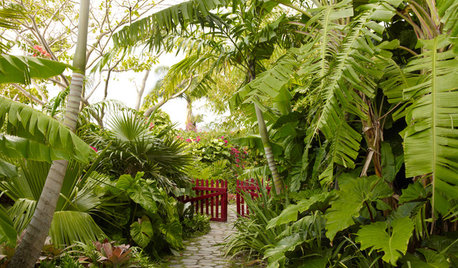Emperor 1
haliwa01
16 years ago
Related Stories

GARDENING GUIDES12 Japanese Maples for a Sunny Garden
The right maple in the right place shines in hot summer sun
Full Story
LANDSCAPE DESIGNWild Gardens Bring Excitement and Beauty to Landscapes
Forget what’s expected and ‘fashionable.’ Bold gardens teeming with site-appropriate plants make for a richer experience
Full Story
GARDENING GUIDES13 Japanese Maples for Shade
A surprising variety of these understory trees is waiting to make a statement in your shade garden
Full Story
ECLECTIC HOMESMy Houzz: Colorful Hand Painting Bedecks a Creative Home
A kaleidoscope of colors on walls, furniture and fabrics brings an energetic spirit to a 1920s colonial in Texas
Full Story
HOUZZ TOURSMy Houzz: French Country Meets Southern Farmhouse Style in Georgia
Industrious DIYers use antique furniture, collections and warm colors to cozy up their traditional home
Full Story
BATHROOM DESIGNSweet Retreats: The Latest Looks for the Bath
You asked for it; you got it: Here’s how designers are incorporating the latest looks into smaller master-bath designs
Full Story
DECORATING GUIDES9 New Ways to Look at Cinco de Mayo Decor
Mon Dieu! There's a French Design Story Behind the May 5 Festivities
Full Story
BATHROOM DESIGNNew This Week: 5 Bold Wallcovering Ideas for Powder Rooms
Take cues from these spaces to supercharge one of the most used rooms in your home
Full Story
DECORATING GUIDESBring in da Funk: How Humble Touches Give a Home Soul
Shake up expectations and stir up interest with pieces that show patina, create contrast or offer a jolt of surprise
Full Story
CONTEMPORARY HOMESHouzz Tour: A London Townhouse Lightens Up
A dramatic redesign of this multistory home transforms its dark 1970s-era interior into an all-white Scandinavian idyll
Full Story





myersphcf
aethetic_pruner
Related Professionals
Mount Wilson Landscape Architects & Landscape Designers · East Patchogue Landscape Architects & Landscape Designers · Eustis Landscape Contractors · Hayward Landscape Contractors · Lantana Landscape Contractors · National City Landscape Contractors · New Cassel Landscape Contractors · West Orange Landscape Contractors · Wheat Ridge Landscape Contractors · Burbank Fence Contractors · Columbia Fence Contractors · Fountain Hills Fence Contractors · Germantown Fence Contractors · Laguna Hills Fence Contractors · Voorhees Fence Contractorsgardengal48 (PNW Z8/9)
aethetic_pruner
gardengal48 (PNW Z8/9)
aethetic_pruner
ezochi
gardengal48 (PNW Z8/9)
ezochi